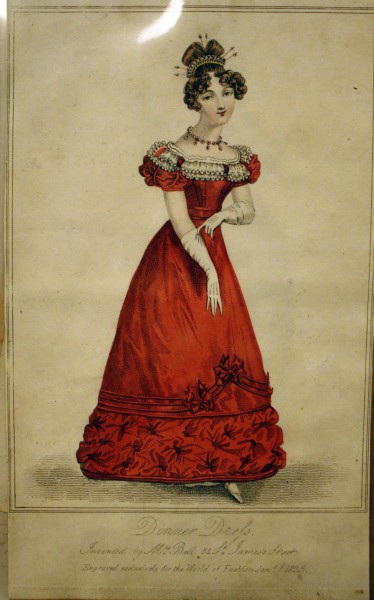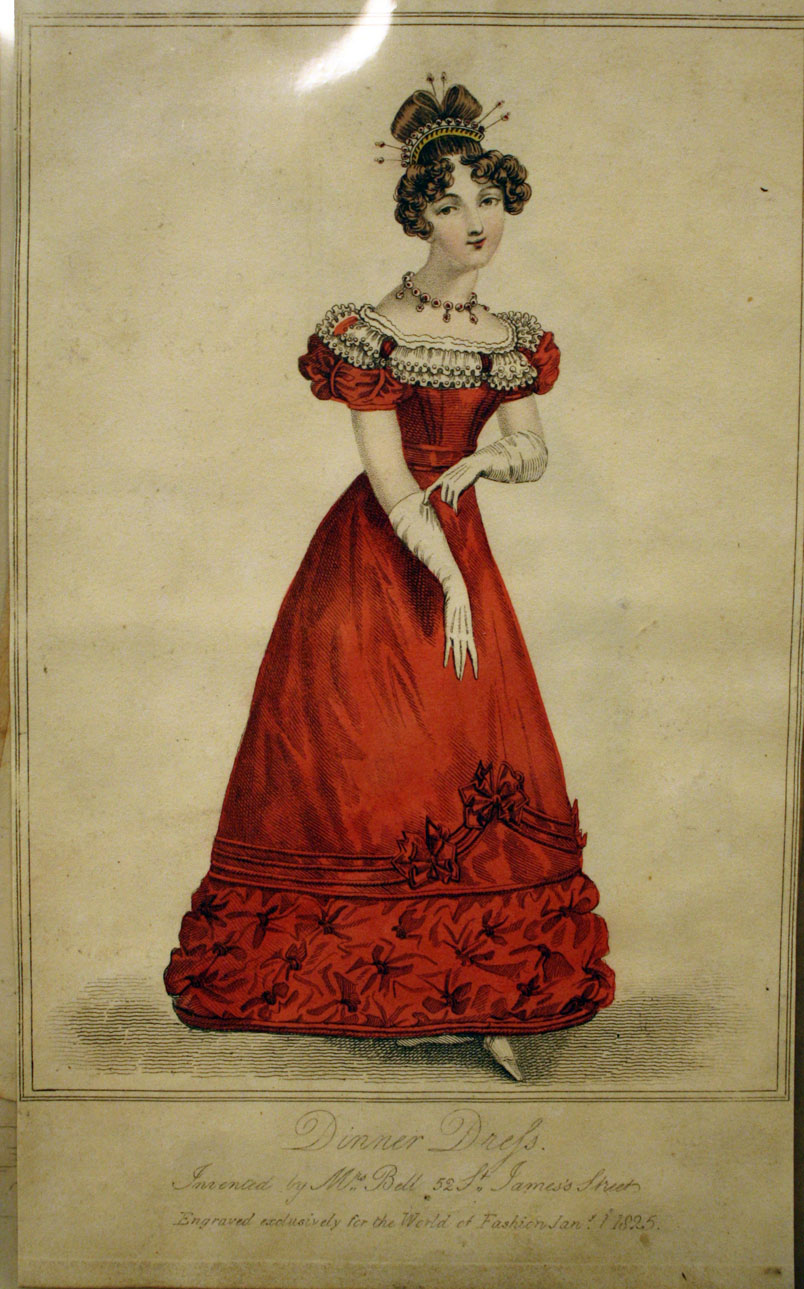
Here’s a pretty gown that would amaze the whole room at a historical fancy dress New Year’s ball.
The lace at the neckline is perfect while the skirt hem is tucked like a puffy quilt. Remember to add the rouleaux at the hem to support that heavy puffed trim.
Complete the look with tiny arrows in the hair. 🙂
Taken from the Jan. 1, 1825 World of Fashion.
Plate provided by Julie Burnsides of Snapdragon Design.


Happy new year for you, your family and friends!
Concerning rouleaux, for my new 1818 project, [project item] .
I need rouleaux with as little weight as possible, because 3 rows (circa 10 meters) are to be sewn on silk tulle. A professionnal seamstress of my friends suggested to stuff the bias strips with (millinery) tubular horsehair, Now I am trying to sew (of course by hand) it neatly and nicely, and it’s no piece of cake (rolling, and waving;;;)
My dearest Jennifer, do you please have any tip? or book, or anything to recommend? I and my gown -to-be would be so grateful. Even if you don’t , thank you.
I can believe the trouble you’re having if you’ve got bias strips you are trying to wrap around bias horsehair! You might try cutting the fabric on the grain (straight or cross). Also, historically the wadding was bits of wool (before it was spun). Another idea would be to get some raw wool or even cotton as those are relatively light weight and use the smallest amount – in other words, no need to pack it tightly into your fabric tube. Strips of silk organza might work too, pushed lightly into the fabric tube as you hand stitch it into the roll. Sorry I don’t have much else for you. But best of luck!
Thank you so much for your answer. I will try each technique, and tell you which one is the easiest to do/ best looking. The n°1 problem is the (very light) silk tulle. But the dress is so beautiful…
Take care, once again: happy new year!
May I suggest a great tutorial [by Angela at Walking Through History on Facebook].
Best regards
That’s brilliant! She is using like a strip of quilt batting, which is nice and light and fluffy. It’s a great modern substitute indeed!
That dress is so pretty!
Wadding was traditionally wool but could be strips of linen too.
I love the neckline! I do not know this era very well. In Elsie Frost McMurry’s study of American Dresses 1790-1900 there is a dress from the Valentine Museum. In the notes it states The skirt front is gathered slightly at the bottom of the built-in waistband. This fullness is continuous, increasing at the sides and through the back in the form of gathers.
“The hemline stands out as a circle and is made quite structural by the three-dimensional embellishment—a repeat of the sleeve motif, only much larger in scale. Nine repeats of the motif extend nearly 12 inches upwards from the hem. The hemline is made somewhat rigid by two strips of bias satin stuffed with wadding. This serves as the base of the border design.” My question is..the wadding, is it wool or cotton or what?
I am a bit out of time for this year. Maybe next year.
Oh – totally go for suffing it! And the horsehair covered by a wide bias strip of lining will make it clean on the inside.
But don’t forget the petticoats! A narrow one with a few corded rows near the hem will help support it tremendously (if you don’t want to put in modern nylon tulle or poly organza).
I like your idea of the featherboning too. A truly modern solution.
I would probably sew in a fat dress hem facing of really wide horsehair braid or even a couple of rows of feather boning at the hem to support the satin and the poufing. For said poufing, I like your ‘tied quilt’ idea and would probably ease on a floating panel of the same satin and literally stuff it lightly with fiberfill, then tack it in places to match the illustration.
If the featherboning or the horsehair is too unwieldy for dry cleaning, I’d put four or five rows of featherboning covered with light tulle or organza ruffles at the hem of a bodiced petticoat underneath to support the dress hem and to fluff it out.
The hem decoration would look nice in a shot silk, allowing for the different colors to catch the eye.